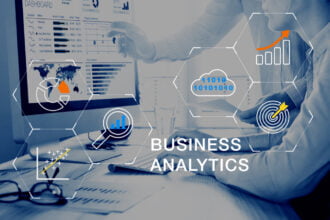Organisations in all types of industries can suddenly create detailed 360-degrees views of their customers, regardless of whether they are B2B or B2C customers. Combining data from social networks, the blogosphere, (online) surveys, click behaviour as well sales data, sensor data, public data and open data can help create detailed personas and micro segments to better target these customers and improve conversion and increase sales. These signals of what consumers are doing, seeing, thinking and sharing at any point in time is becoming easily available for all businesses in any industry, from SME’s to large multinationals, and this completely changes the playing field for organisations.
Those organisations that are capable of identifying their customers in so much detail will be able to deliver very targeted messages, create personalized products and enter in a one-to-one relationship even if the company has over 1 million customers. As a result retail stores such as Walmart or Target are capable of delivering personalized offers to customers walking through an aisle in the store or publishing companies can provide customer stories with corresponding personalized advertising and personalized related articles.
There are several important aspects to consider when developing a 360-degrees view of your customer. First of all, you should obtain a clear understanding of their online and offline behaviour, meaning how do they interact with others? What do they say online and by whom are they influenced? It is also important to have access to historical transaction data, be it online or offline. What did they buy, when, for how much, how (online or offline) and how did they react to it? Walmart is pushing this to the limits, because with the “Scan and Go” app they allow customers to scan and pay their products with their mobile phone. Consequently, Walmart understands which products where picked from what shelve when and even knows after how much time a product was put back on the shelve (and consequently deleted in the app). This is extremely valuable customer information.
The result is data-driven customer-centric marketing that has the objective to truly get to know the customer and deliver a personalized, relevant message/product/service to that customer. There are different tools that marketing departments can use to get to know their customers. Sentiment analytics offers marketers the wisdom of the crowd and gives them a focus group of millions of customers that can be tracked and which gives insights in how they think about the company and its products/services. Natural Language Processing is an important aspect to better understand what customers want and will provide vastly new data sources such as voice recognition data when customers call the call centre that gives insights in real-time problems. Geospatial Data can be used to send personalized relevant offers to customer based on their location, be it when they walk past your store to hyper-local offers in a certain aisle in your store. Finally, different data mining techniques can help to find those important patterns when all the different data sources are combined.
The effect of all these analytics is detailed and extensive profiles of your customers that give insights in their loyalty, their potential and their (lifetime) value. Based on all this information, a company can now recommend the best suitable product for the right customer. But is that really something new?
In the past, when you went to the local bakery (or the butcher or flower shop for that matter), they knew you by name, they knew which bread or meat you liked and most probably also knew details from your personal life because of the regular chitchat happening when you were in the store. At that time, all this was fine because you also knew the baker and details of his/her personal life. The world was small and it felt comfortable. So what has changed?
Well, today it is not the small local store that knows all the details, but a global retail store such as Walmart, Target or Woolworths for that matter. They also know each customer (or most of them) by name, what they like and what their personal life looks like (think of the famous Target case where they knew that a teenager was pregnant before her parents knew). However, the problem is that the balance has disappeared, because the customer does not know anything anymore about the supermarket.
Creating 360-degrees customer profiles using vast amounts of data can be very interesting for organisations, but they have to be aware of this unbalance and deal with it correctly when getting to truly know their customers. They should be open and transparent to their customers what they know about them and give them the opportunity to delete data if they feel uncomfortable with all that data being collected. This will be beneficial for both parties as the customer will feel more in control, know what data is collected and what he/she gets in return while the company can use the data to optimize their offering and increase their revenue.







